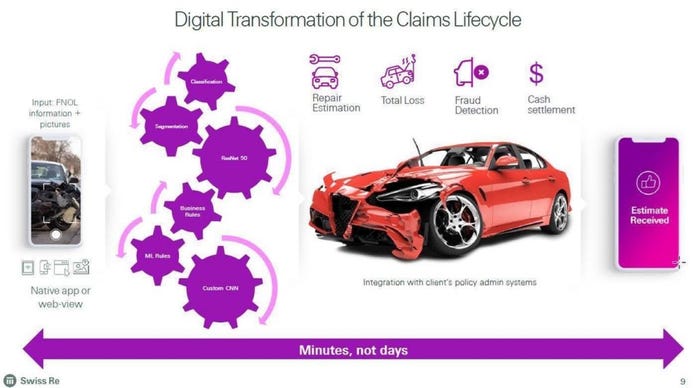AI Summit New York: Swiss Re on Digital Transformation in Automotive
Techniques like transfer learning and logistic regression are helping auto insurers better manage claims
December 8, 2021

The digital transformation is well underway in the automotive sector where artificial intelligence is improving loss ratios in the industry and helping prevent new insurance claims.
Amit Arora, vice president of reinsurance company Swiss Re, said everything from managing vehicle fleets to reassuring dealers that car damage will be repaired promptly has benefited from AI technologies like computer vision.
For drivers, connected technologies that use intelligent automation to ease navigation and identify risks have also improved safety and comfort on the road.
The trend is of interest to Swiss Re and other auto insurers because the cost of paying out claims is rising, and therefore directly impacting underwriting auto books of businesses for reinsurers like Swiss Re.

Crashes rose by 4.7% (claims frequency rose 4%, incurred losses went by about 10%, and overall insurance premiums rose 6.6% as a result) – during the 2017 to 2019 period, Arora said, although the trend reversed somewhat last year due to fewer cars being on the road due to the pandemic.
Techniques such as transfer learning – which uses AI skills acquired for a different use case – neural nets and logistic regression have helped insurers identify whether damaged vehicles should be written off before attempting repairs.
“The information received [on whether a car can be repaired] is typically preliminary at first – the policyholder saying something is damaged and a certain amount of trauma in the driver’s head, so there could be a danger of either underreporting or overreporting,” Arora said. “Call centers struggle to [make the decision] on whether it’s a total loss.”
The potential for AI in car insurance will grow further as more motorists get their hands on connected cars.
Today these account for a low share of overall claims but have enabled insurers to conduct real-time AI assessments of crash data from the vehicle, which in combination with the customer’s photographs help predict damage severity and determine which parts need to be fixed.
A real-time cost estimate for repairs can be accessed immediately and weighed against the loss of scrapping the vehicle, or the possibility of a cash settlement with policyholders that allows them to keep the vehicle and recoup some of the financial loss for the insurer.
About the Author
You May Also Like






